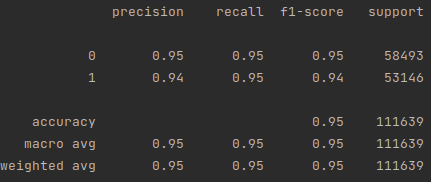Classify between open-ended and close-ended questions, where close-ended questions lead to 'yes/no' answers, and the rest being open-ended questions.
You can download dataset here. Simply download data from available categories and place them in the data/amazon_data
Among those, I downloaded the following categories:
- Appliances
- Cellphones & Accessories
- Electronics, Office Products
- Software
- Tools & Home Improvement
These categories seemed to me more generalizable in other domains. Feel free to experiment with other categories!
Glove 100d embedding used for model training. Download Glove vectors here
Tested on Python 3.7+
pip install tensorflow==2.3.0 keras-tuner pandas gzipI used KerasTuner to perform hyperparameter search. With current configuration, getting the best parameter took ~ 8 hours on my laptop with Nvidia GTX 2070 MaxQ GPU. If you want to go through HP search yourself, first run
python scripts/hp_search.pythen to get the final model with best HP
python scripts/train_model.pyHowever, if you don't want to bother with HP search, change the following in scripts/train_model.py and specify the units to something like this. Training processes won't change.
def model_builder():
model = Sequential([
Embedding(len(word_index) + 1, 100, weights=[embedding_matrix], trainable=False),
Bidirectional(LSTM(64, return_sequences=True, dropout=0.1)),
GlobalMaxPool1D(),
Dense(18, activation='relu'),
Dropout(0.1),
Dense(1, activation='sigmoid')
])
model.compile(optimizer=Adam(learning_rate=1e-2),
loss="binary_crossentropy",
metrics=[Precision(), Recall()])
return model
model = model_builder()To simply run the pretrained model in another script
import pickle
from tensorflow.keras.preprocessing.sequence import pad_sequences
from tensorflow.keras.models import load_model
model = load_model('YOUR_PATH_TO_PROJECT/models/amzn_model')
with open('YOUR_PATH_TO_PROJECT/models/amzn_model/tokenizer.pkl', 'rb') as f:
tokenizer = pickle.load(f)
sample_texts = ['sample text here', 'another text here']
transformed_text = tokenizer.texts_to_sequences(sample_texts)
transformed_text = pad_sequences(sequences=transformed_text, padding='post', truncating='post', maxlen=100)
pred = model.predict(transformed_text)Or simply you can use the provided inference script
python scripts/sample_inference.pyThis model leverages pre-trained glove embedding, which is connected with Bidirectional LSTM, pooling and some dense layer.
Complex enough to be effective, yet simple enough to not overfit and don't take forever to train! :)
The final model achieves around 94~95% precision, recall, and F-1 score.
- Try including all the available categories from the dataset.
- HP search only included changes in unit values, not necessarily regarding inclusion of layers (or, exclusion thereof).
- I'd be curious to know how finetuned Transformer models will perform on this dataset, though I suspect only a marginal improvement from here on.
Pull requests welcome!

